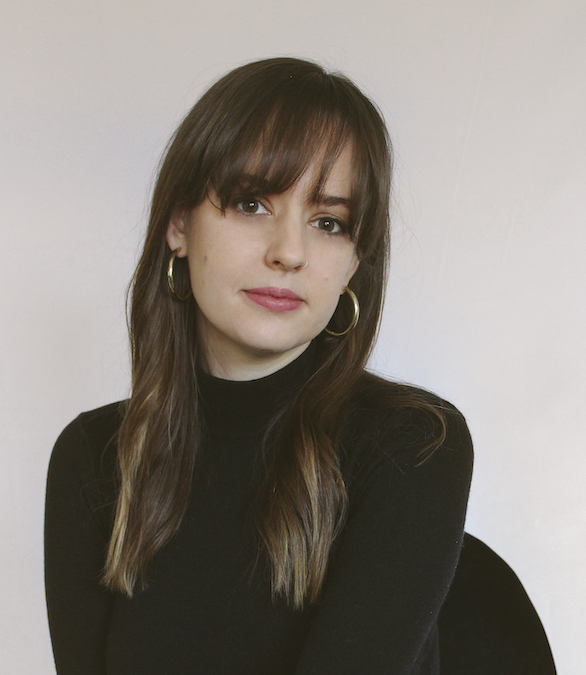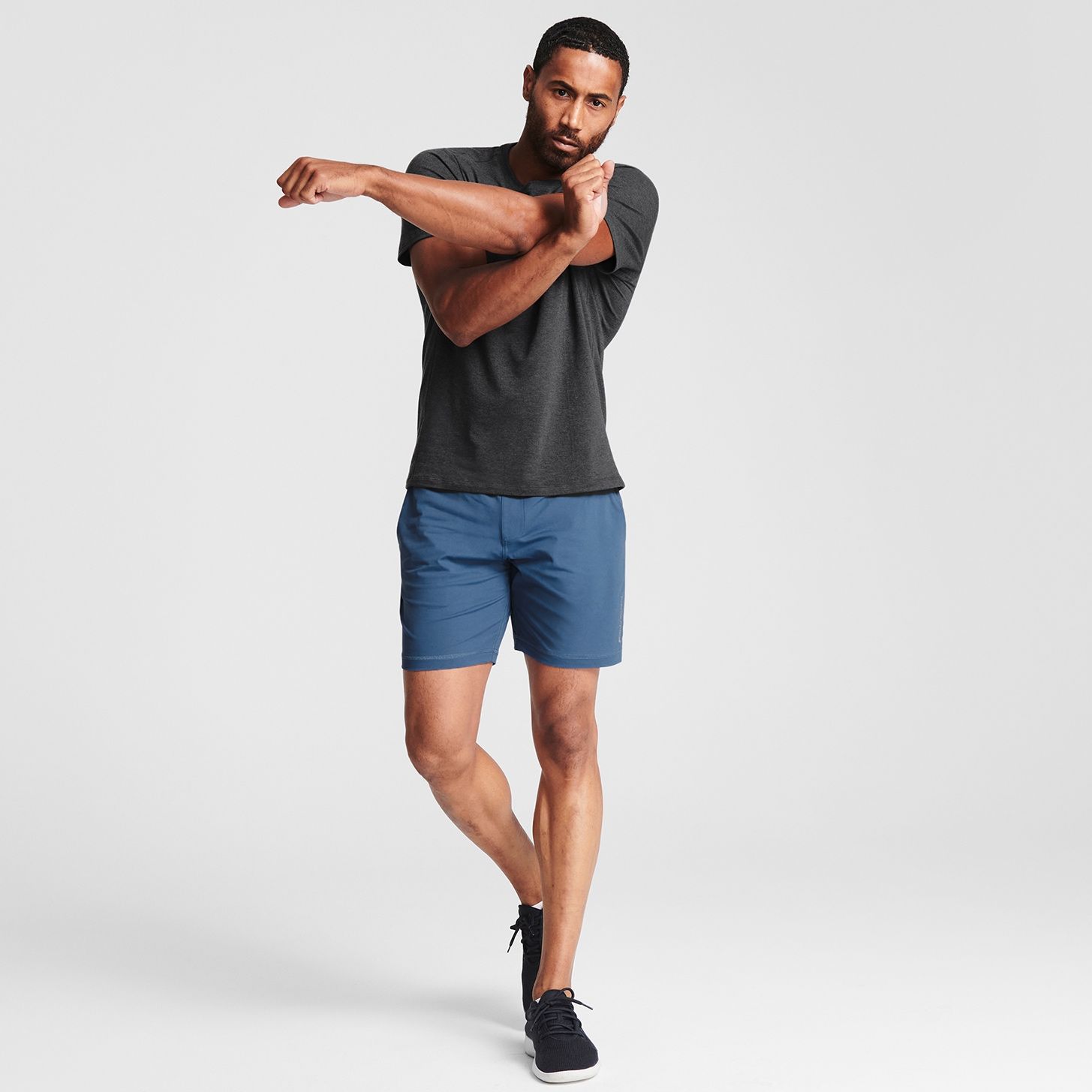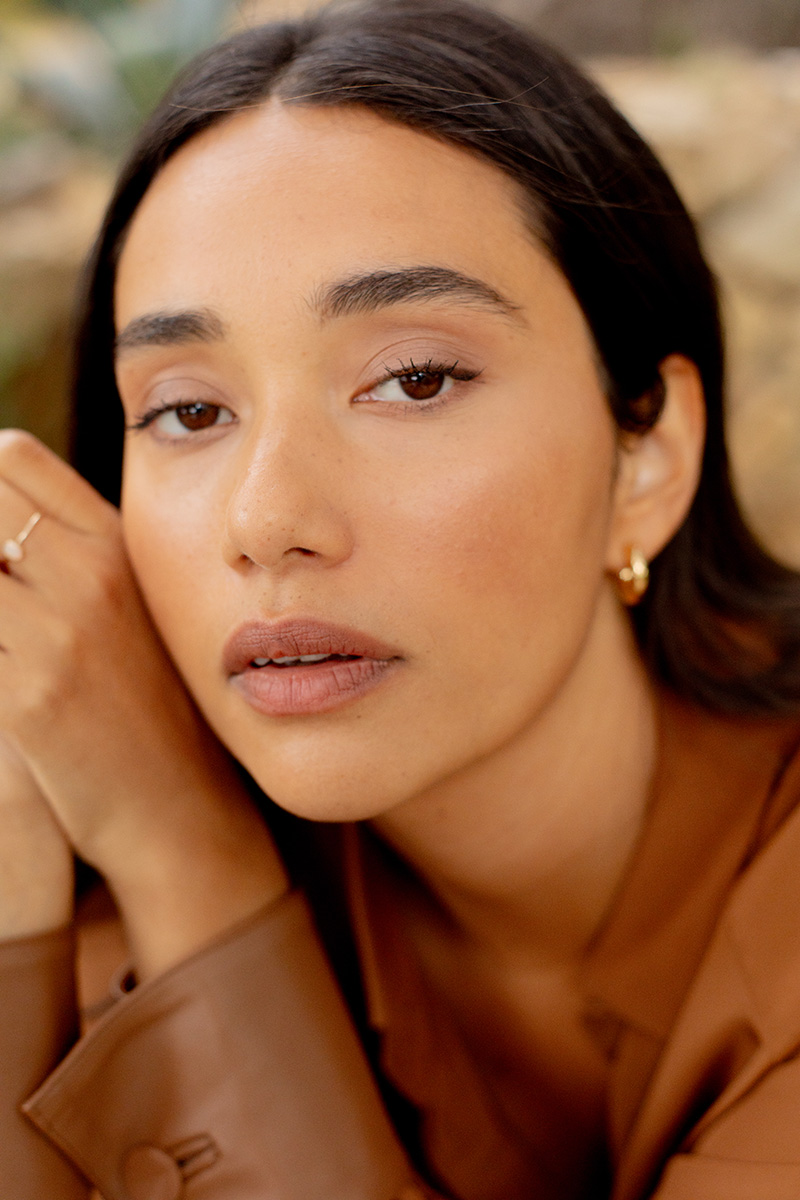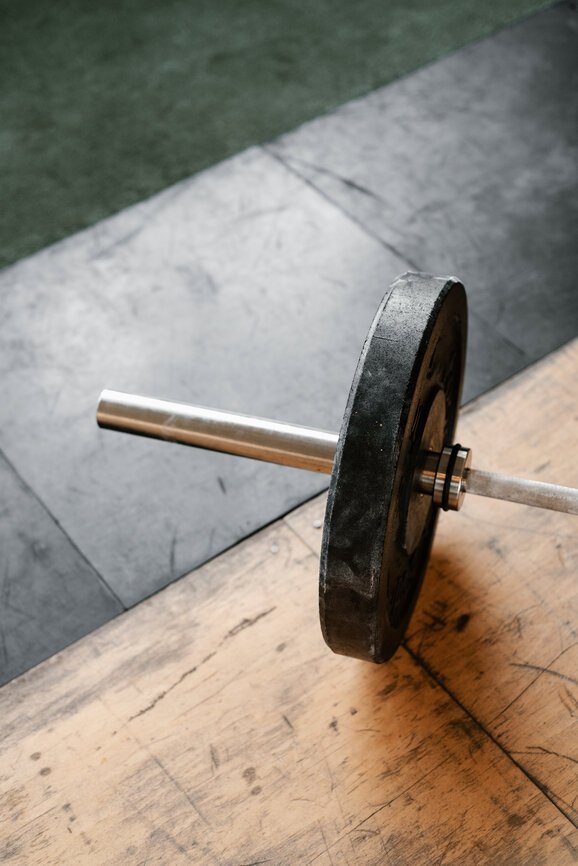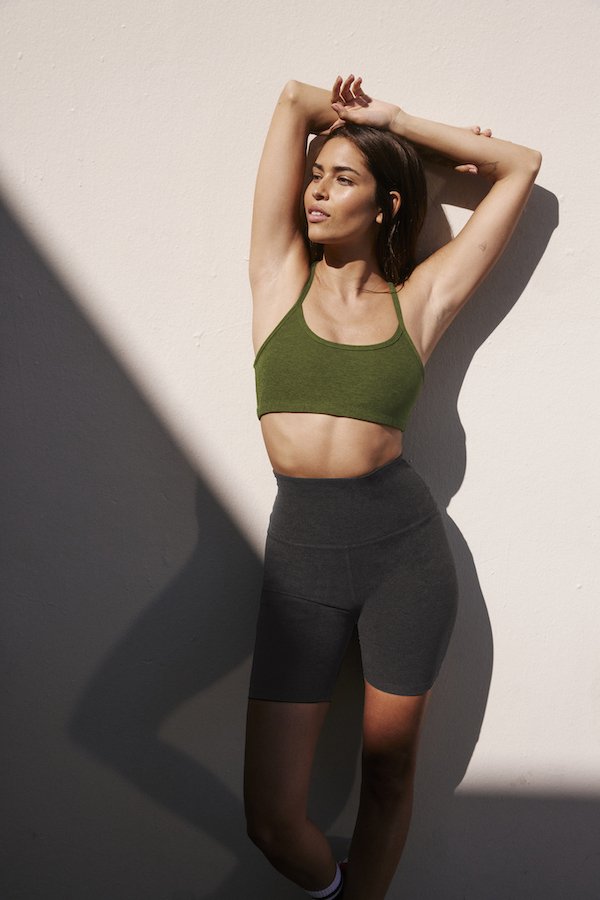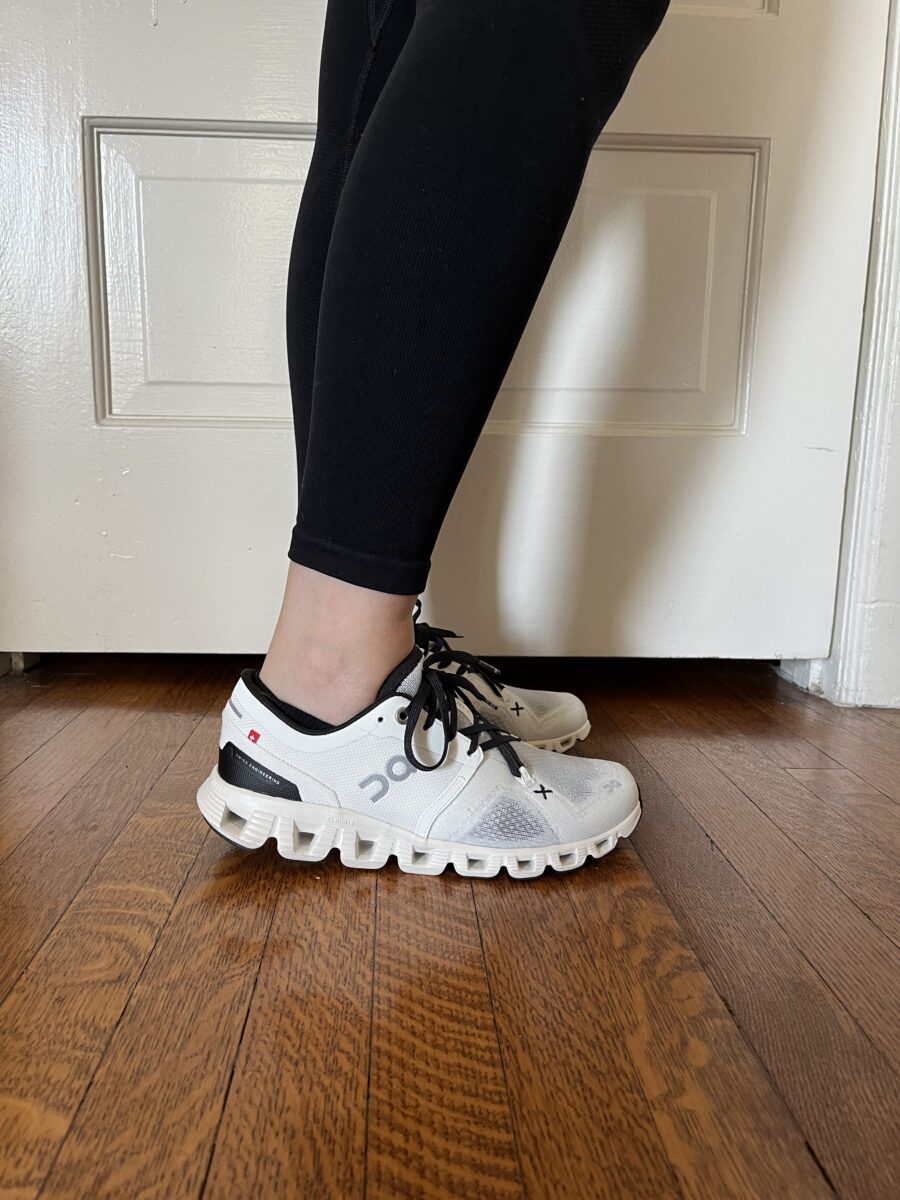
7 Best Sustainable Running Shoe Brands Of 2025 (Review)
The Good Trade editors endorse products we’ve personally researched, tested, and genuinely love. Learn more about our methodology and business model here.
I personally reviewed the top sustainable running shoes — these are my favorite picks, with notes on comfort, performance, and durability.
In the past few years, I’ve fallen in love with running after years of avoiding it. I started by incorporating a few miles into my week and running on the treadmill at the gym. There’s something about beating your mile time or going a bit farther than you thought was possible — runner’s high is definitely real. Before I knew it, I was choosing to run every day and finding the best music, stretches, and shoes to support my new hobby.
Sustainable running shoes can be hard to come by. Finding a perfect shoe with enough cushion and support that doesn’t include virgin plastic, polyester, or rubber is a tall order. Thankfully, some of my favorite sustainable brands have put themselves up to the challenge and created responsible running shoes that even the most experienced runners will love. And I got to take all of them for a test run so I could report back comfort and performance for you! But first:
Do I actually need “running shoes” for running?
The short answer is yes! Getting running-specific shoes is helpful for both comfort and injury prevention since running shoes are designed with extra cushioning and support that help absorb the impact each time your foot hits the ground (which is a lot of impact over the course of a run!). While regular shoes can work, walking or athletic shoes that aren’t designed for running don’t have the same level of shock absorption or support that stabilizes your foot. Running shoes also have specific designs that support the natural movement and mechanics of your foot, which helps prevent common running-related injuries like shin splints, knee pain, and plantar fasciitis. Plus, a good pair of running shoes can improve your performance by keeping you comfortable and supported so you can focus on your run instead of worrying about sore feet.
Why should I consider sustainable running shoes?
Because running shoes need to be replaced often — ideally every 300-500 miles — sustainability is something we want to keep in mind when choosing a brand to shop. While it can be hard to find a quality running shoe that is made with recycled or renewable fabrics, it’s not impossible! Things we look for in a shoe and brand are eco-friendly shoe materials, a commitment to sustainability programs, certifications like B Corp, and recycling or give-back programs. Of course, we want shoes that are good for our bodies and support us as we train and run. Thankfully, the brands below offer a bit of both — shoes that perform and shoes that are better for our planet.
Our methodology & criteria:
I was sent these running shoes for testing and ran in each pair over the course of a week for multiple miles. I used all of them on the treadmill, as I prefer to run indoors. I judged these shoes based on comfort, how supportive they were, how I felt post-run, plus the sustainability specs and pricing. Here are a few specifics as to our methodology and criteria:
PERFORMANCE | We’ve included running shoes that are designed for running. These shoes are engineered for sprints, distance runs, and indoor and outdoor training.
SUSTAINABLE MATERIALS | All of these brands include sustainable materials and recycled materials in their running shoes.
COMFORT | Comfort is important when it comes to running! I tested each of these shoes for comfort over at least three miles to ensure they’d hold up over the course of intense training and long distances.
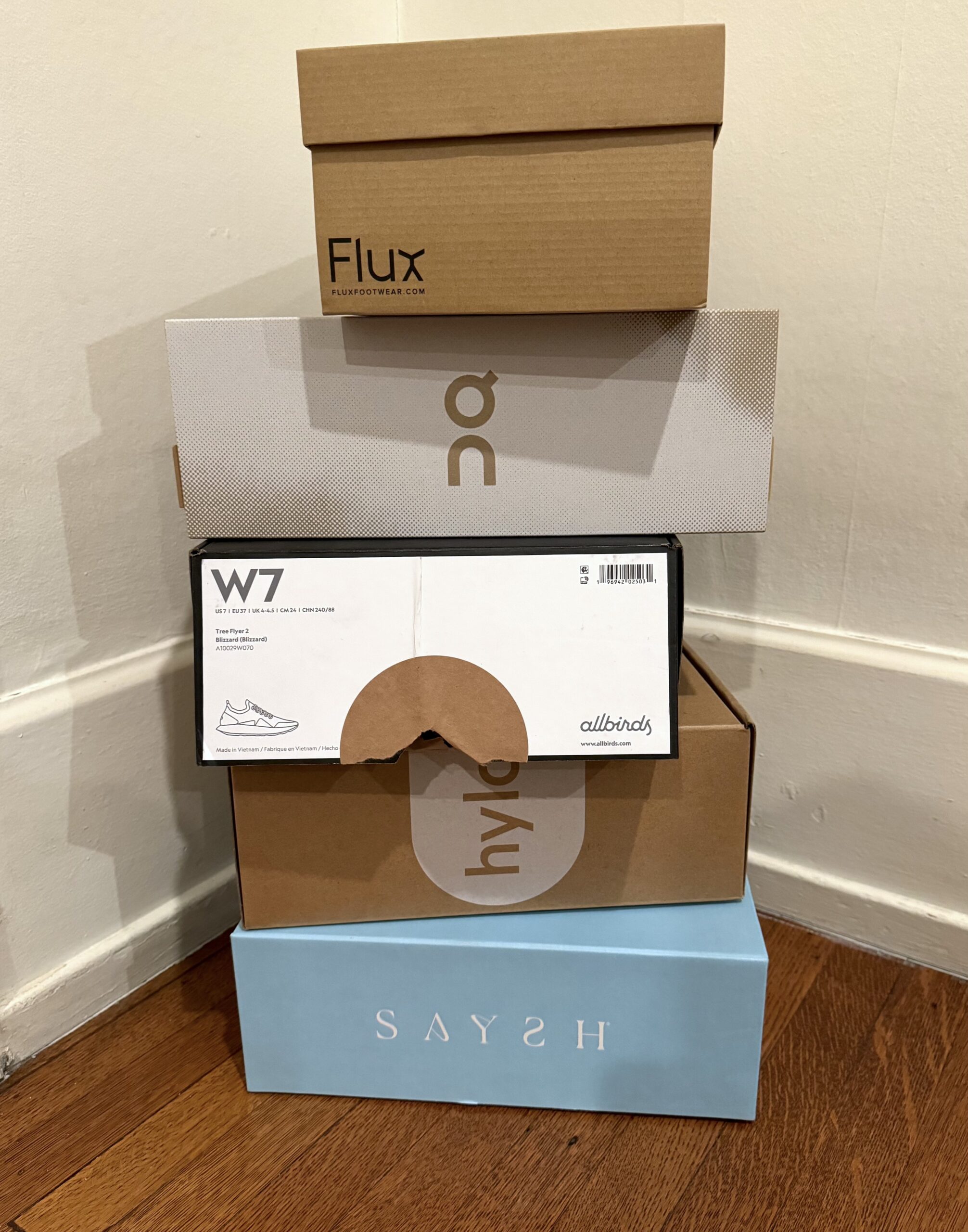
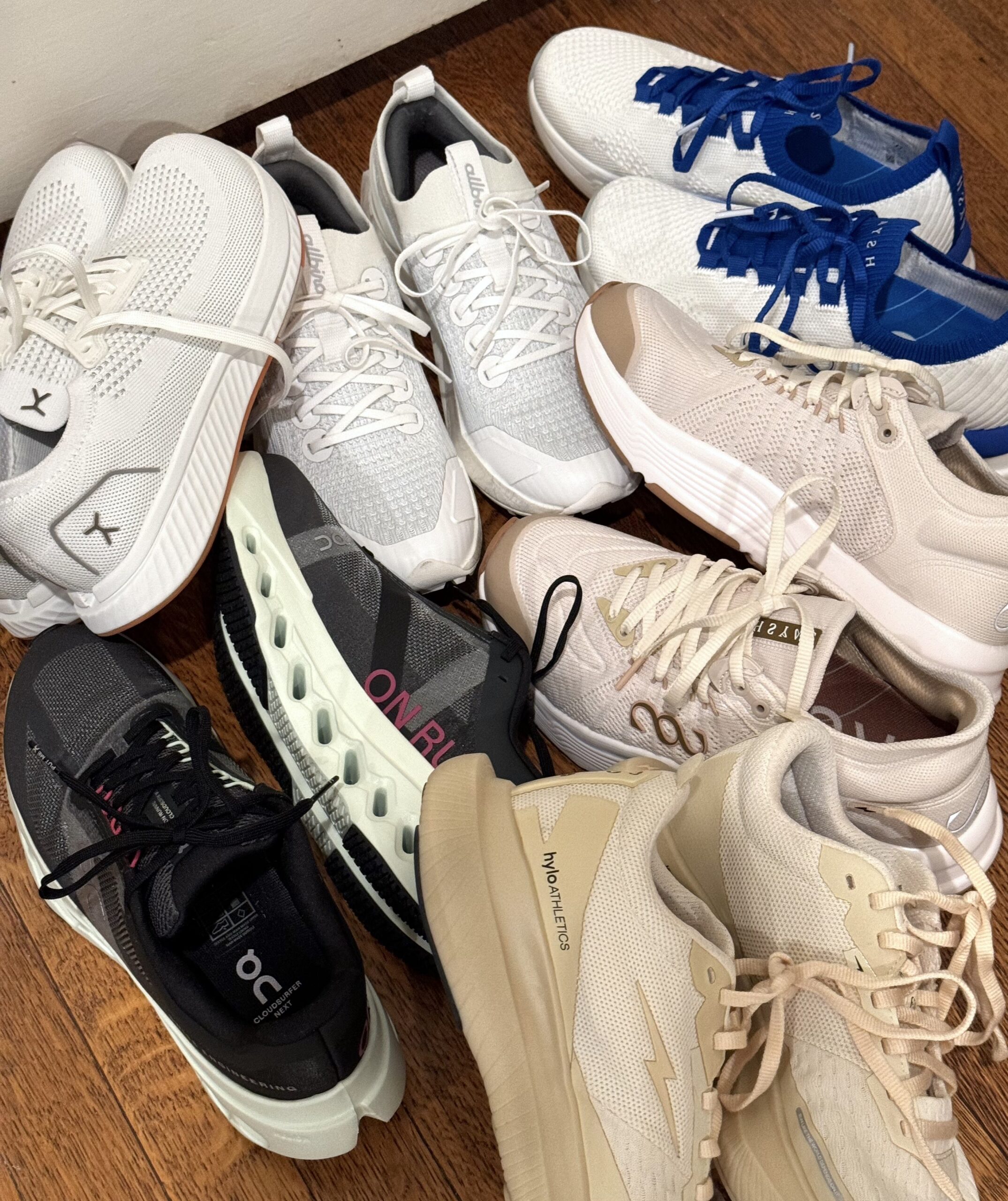
Looking for a sports bra to train? Read my review of the top sustainable sports bras for support and performance.
1. On Running
Best For | Crosstraining, sprints, distance runs, road running
Materials | Polyamide, Polyester (recycled), Thermoplastic Polyurethane (recycled)
Size Range | Women’s 5–12, men’s 7–15
Price Range | $140–$280
Swiss brand On Running designs some of the best shoes for road running, distance running, HIIT, and everyday training. Because of the unique engineering, comfort, and performance-driven design, the brand has earned notoriety in the running space and upholds its reputation as one of the best. Their distinctive “CloudTec” technology, which features individual pods along the sole, provides a combination of cushioned landings and firm take-offs, making these shoes ideal for both long distances and short sprints. This technology minimizes impact on the joints while maximizing energy return, which can help improve speed and endurance.
As for my personal take, I received my second pair of On’s after logging hundreds of miles in Cloud X 3 (pictured left). I went with the new Cloudsurfer Next (pictured right) for the new features, like the updated forefoot rocker that pushes power to the front. I wear them for treadmill interval training and distance runs and notice improved speed. Mostly, I notice that I feel good after running — no shin splints or sore joints. The high-quality materials enhance durability and adaptability, and I love that the brand has sustainability commitments as well through its Cyclon program for recycling shoes.
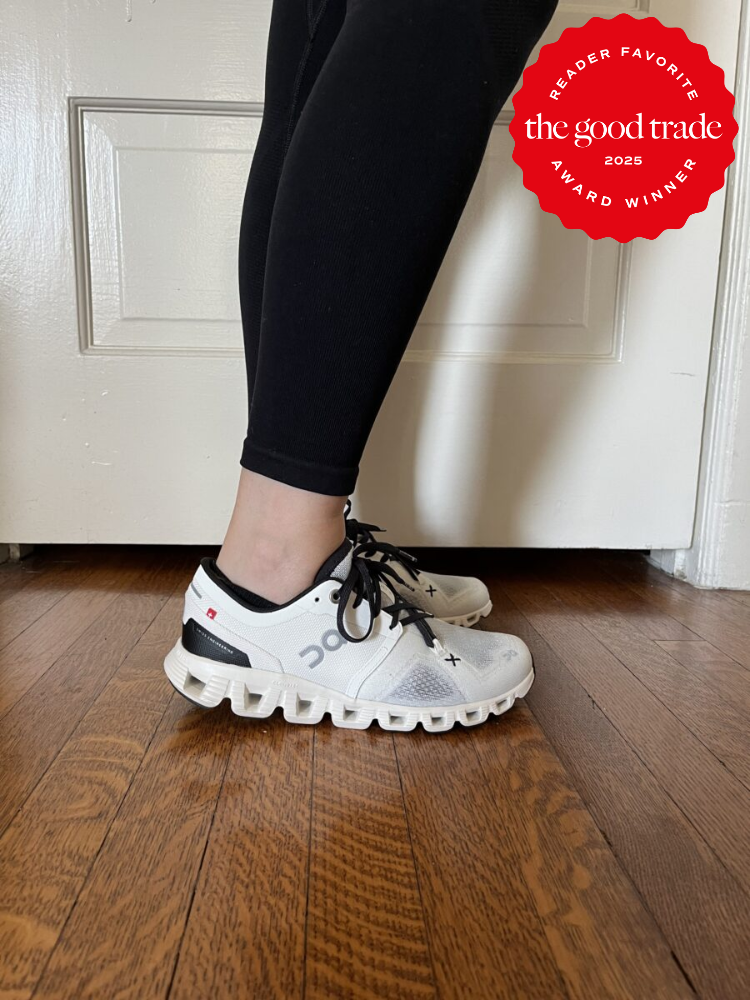
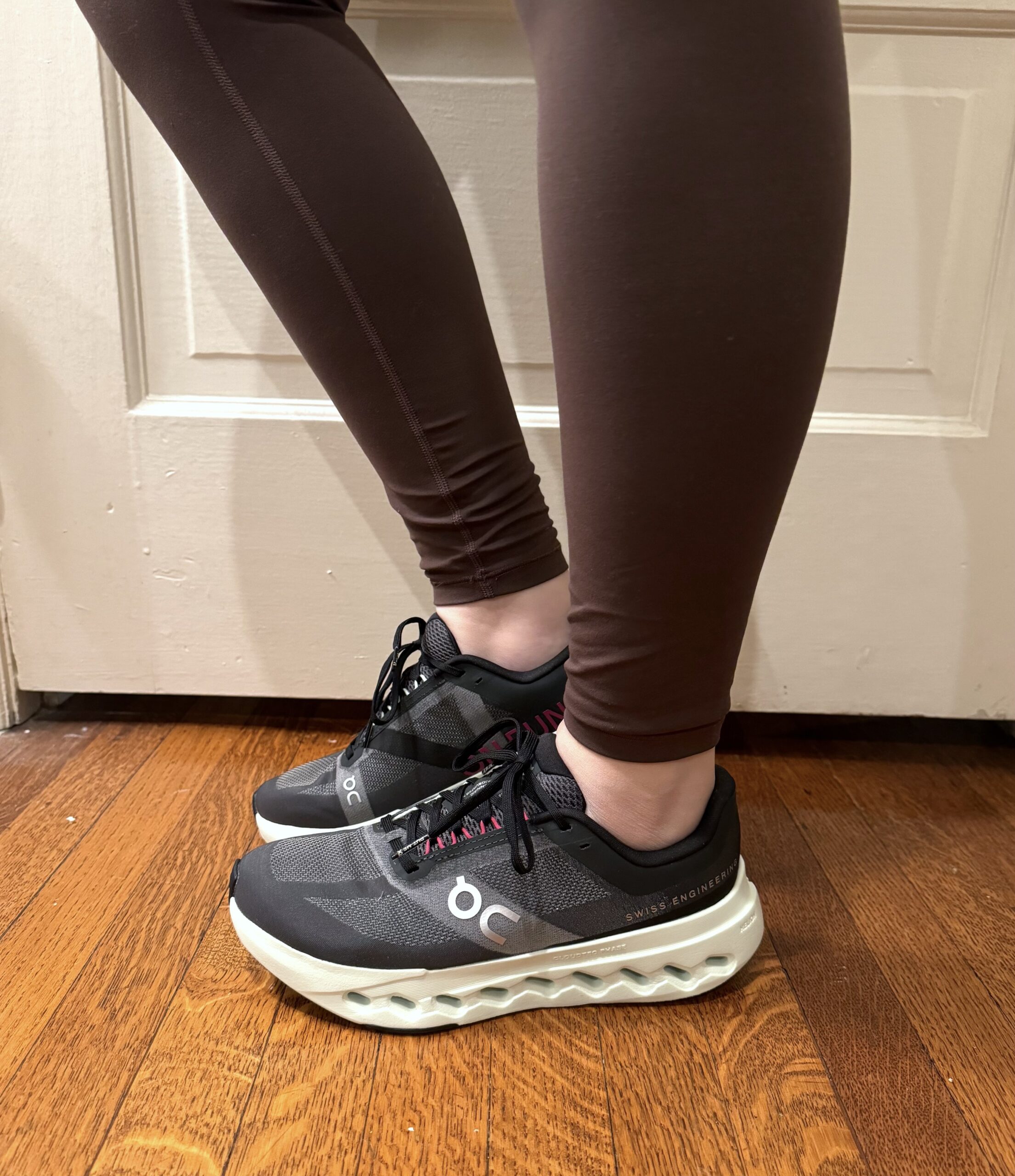
2. HYLO Athletic
Best For | Lightweight training shoes
Materials | 100% bio-based nylon, nitrogen-injected foam with added bio-EVA, 100% bio-based Tencel™ Lyocell laces, natural rubber
Size Range | Women’s 6–11.5, men’s 7–14
Price Range | $165
HYLO Athletic creates certified vegan running sneakers made with corn fibers, natural rubber, algae, and organic cotton. The brand also has its hyloop program, which offers care, repair, and recycling to keep shoes out of the landfill. The shoe we tested was the The hylo RUN, though it’s really made for all kinds of athletics and is lightweight enough for box jumps as well as road sprints. As the brand explains it, this shoe couples the cushioning required for short to middle-distance road running with the stability needed for the gym. The science behind these shoes is pretty spectacular, and they are incredibly lightweight at only 240g.
I personally love these shoes. HYLO knows how to make a good running shoe and I’ve been super impressed with how comfortable these shoes are. The performance is what you’d expect from known running shoe brands, and it feels so good knowing these are made with sustainable materials and by a brand with a strong sustainability ethos. For your first pair, I recommend the new HYLO Impact shoes (pictured below). They are perfect for everyday road running, maximum responsiveness, and high cushioning.
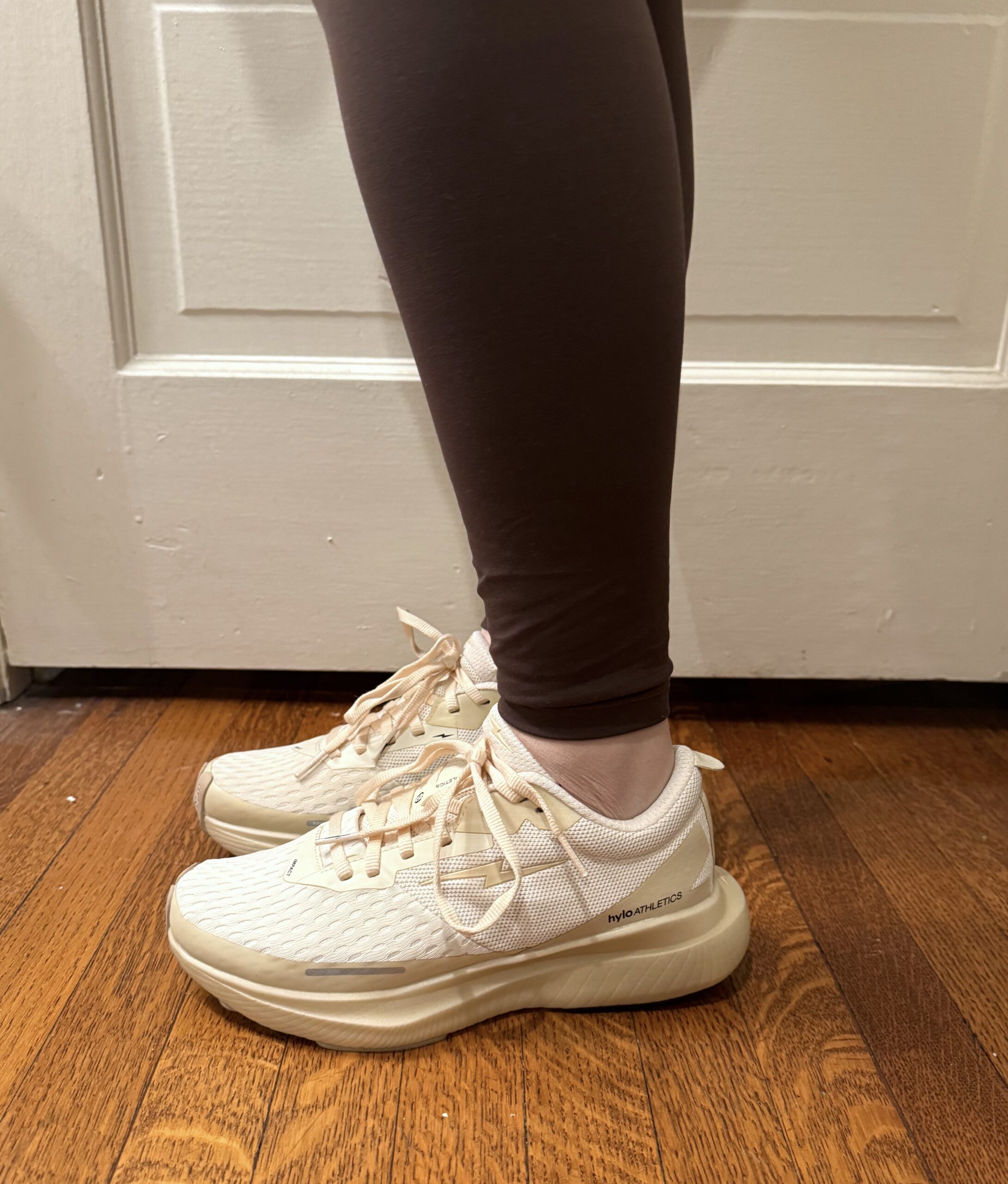
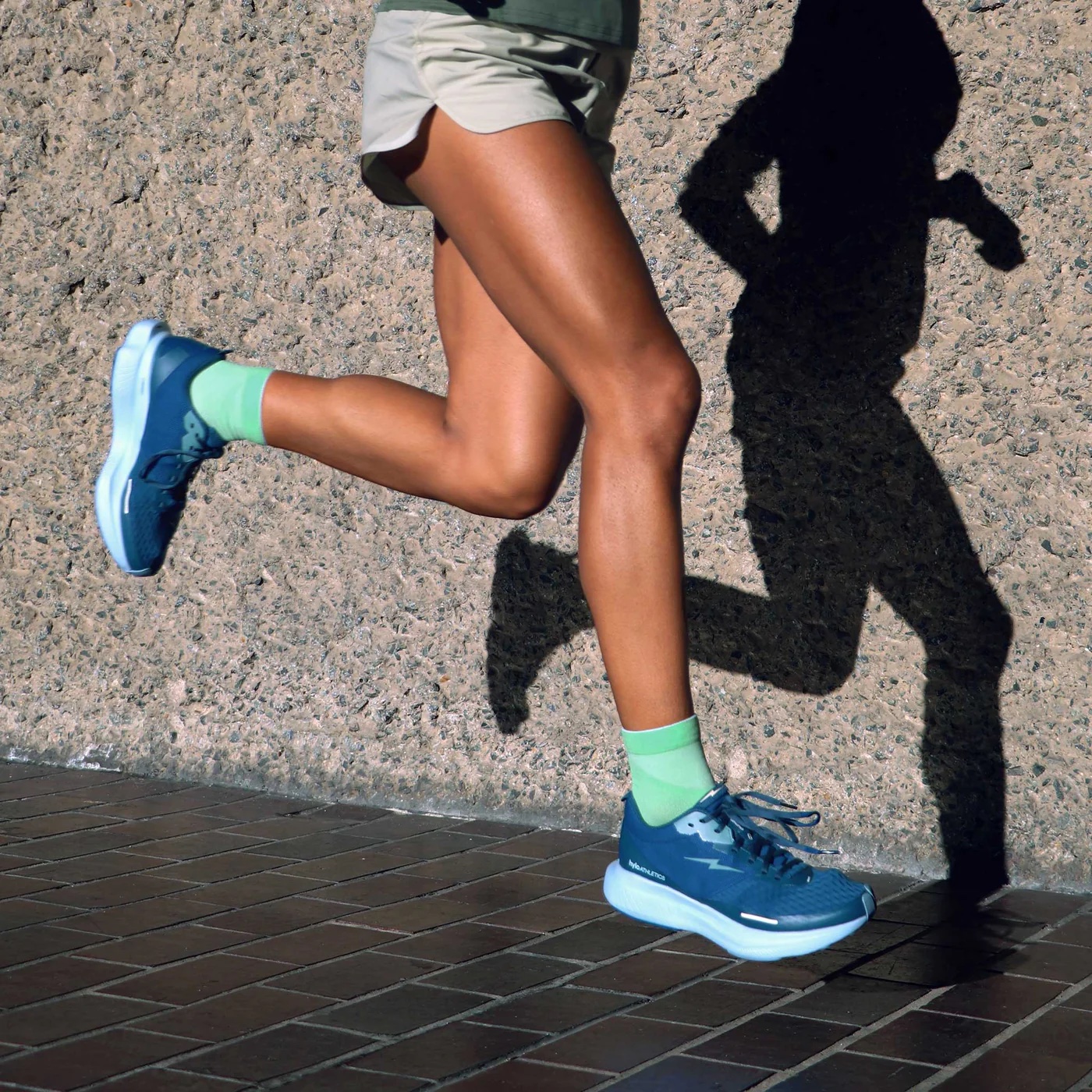
3. Saysh
Best For | Running shoes designed for women’s feet
Materials | laces made from recycled water bottles, a knit upper incorporating recycled components, supercritical foam derived from sugar cane
Size Range | 5.5–13 (women’s)
Price Range | $150–$185
Saysh is on a mission to enhance maternity rights and fairer treatment for female athletes. The brand was founded by Allyson Felix — the most decorated track & field athlete with 11 Olympic and 20 World Championship medals, alongside her brother and business partner Wes to champion women’s specific needs. Saysh sneakers are crafted with a unique femiformityFIT technology, which celebrates the unique anatomy of women’s feet — distinct in size, width, arch height, and shape and responsive to hormonal changes. Traditionally, major footwear brands have overlooked these differences, designing sneakers primarily around men’s feet. To say we’re obsessed with this brand and its mission is an understatement!
As for the actual running shoes, I tried the Felix Runner (pictured left) and The Evelyn Runner (pictured right). Both are a 10/10 in my book for long runs and interval training, but I especially love the seamless upper on the Evelyn for a sock-like fit and stability. For running outside, I definitely prefer the Felix as it has discrete reflective details on the heel logo and eyestay islands for increased visibility and safety. Honestly, I love both and will be rotating between them! Note: Saysh invites women who have experienced a change in shoe size due to pregnancy to contact customer service for a complimentary size swap!
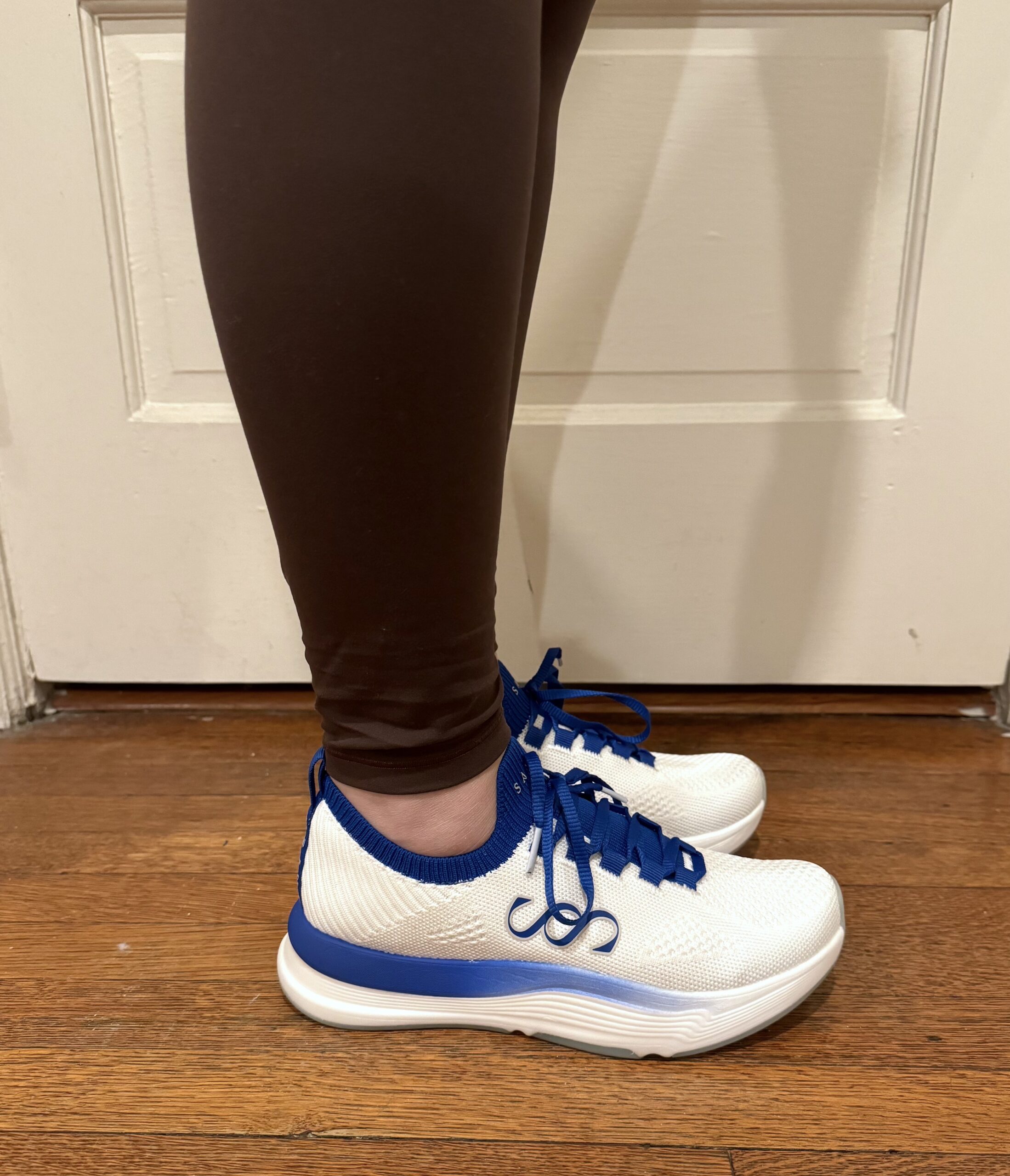
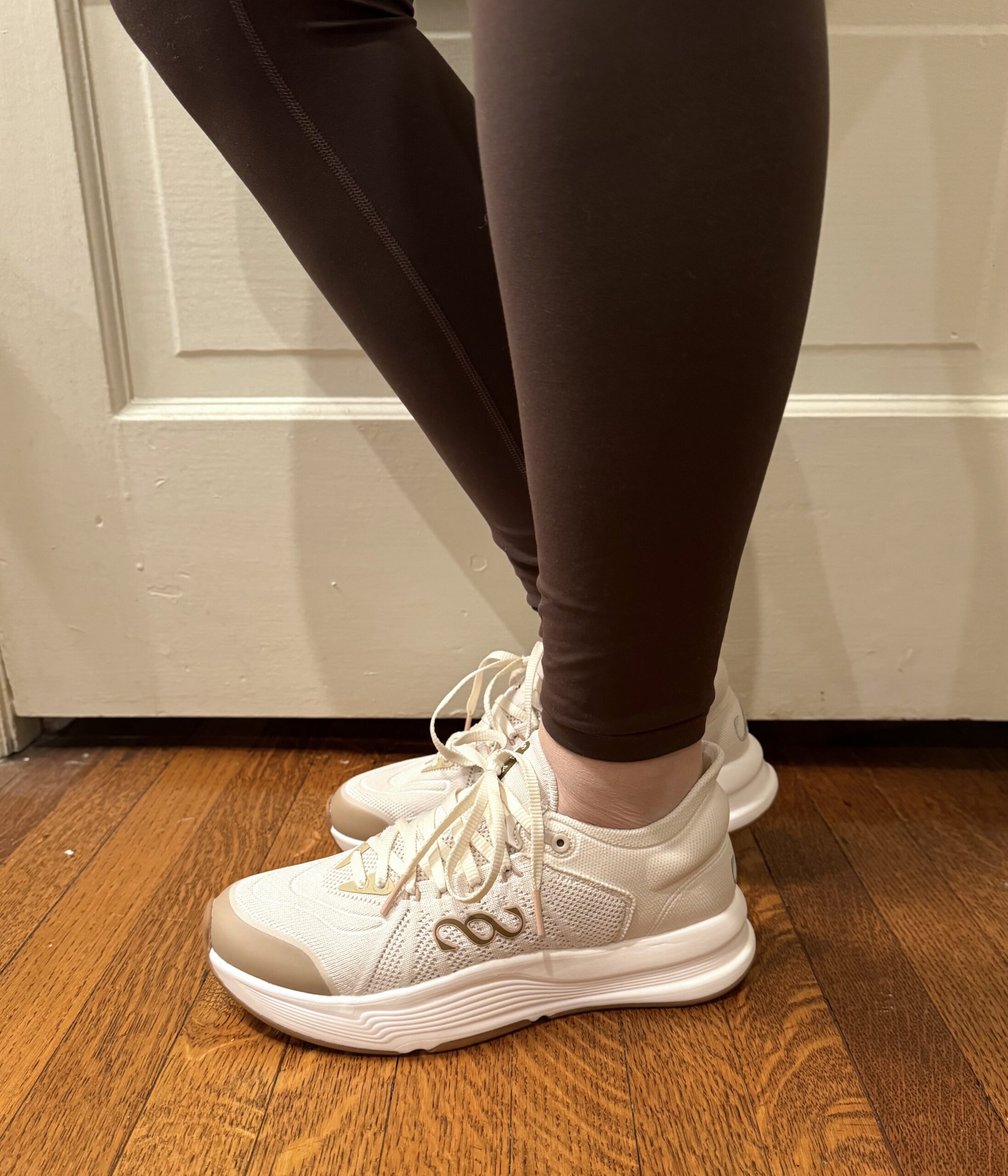
4. Allbirds
Best For | Breathable, lightweight running shoes
Materials | FSC-certified eucalyptus tree fibers, responsibly sourced wool, sugarcane
Size Range | Women’s 5–11, men’s 8–14
Price Range | $120–$160
Allbirds, a certified B Corp, has revolutionized the shoe game. Its sustainable running shoes and sneakers are crafted using tree fibers and wool, sugarcane for the midsole, and castor oil for the insoles. Even better, the brand is fully carbon-neutral and ships its shoes in recycled packaging. They’ve also recently launched Allbirds ReRun, a marketplace that keeps gently used or slightly imperfect products out of landfills and into new closets.
I personally tried two shoes from Allbirds for running: the Tree Dasher 2 (left image) and the Women’s Tree Flyers 2 (right image). The Dashers are the next evolution of Allbird’s everyday active shoe with more responsive foam, extra grip, and an improved fit. While not my favorite for sprints or breaking mile records, it’s a perfect shoe for zone 2 training and warmup jogs. The sportier, angular heel shape also softens impact, which my shins love. As for the Flyers, they are a better match for serious running and training. The external heel counter (made entirely of recycled content from the midsole foaming process) helps keep strides steady and reduces waste — win!
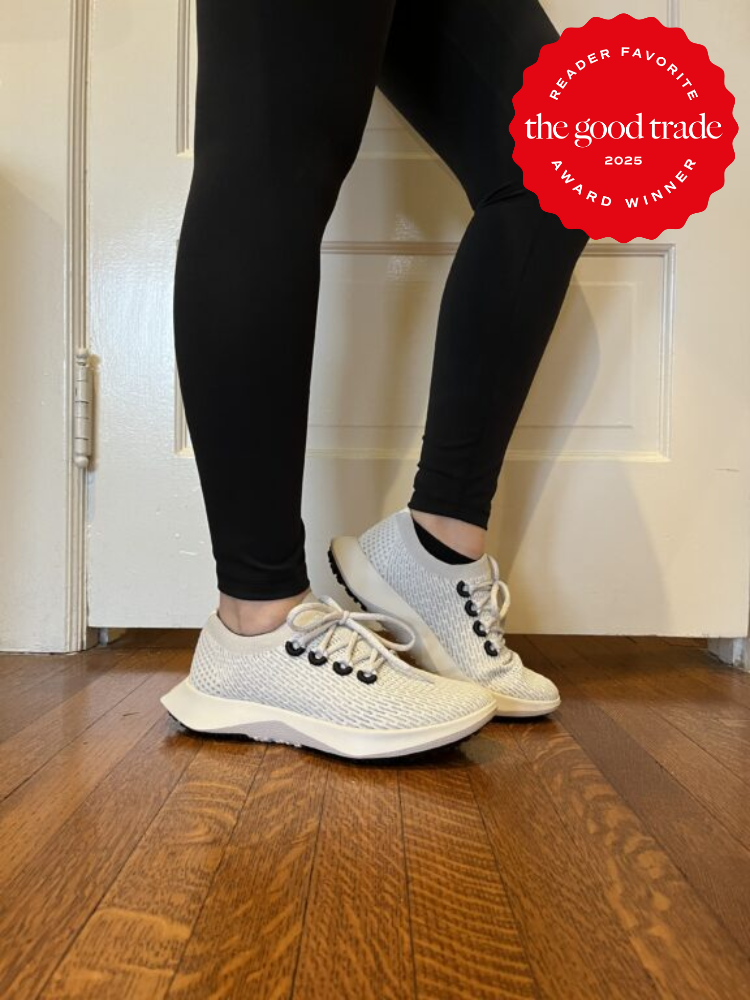
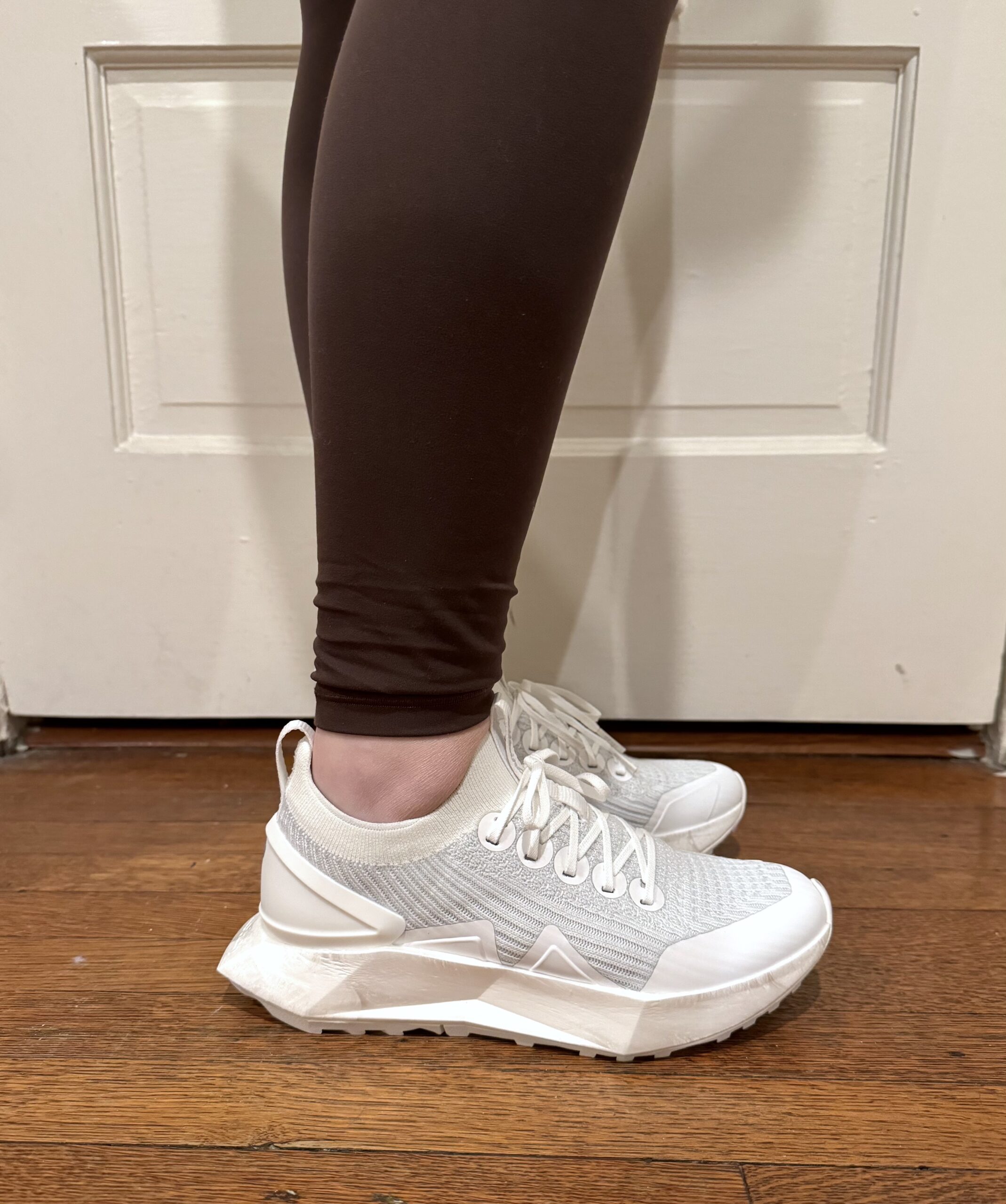
5. Vivobarefoot
Best For | Barefoot running shoes
Materials | Recycled polyethylene terephthalate, synthetic rubber
Size Range | Women’s 5.5–11.5, men’s 7–15
Price Range | $145–$200
Move as Mother Nature intended is the slogan behind Vivobarefoot, a shoe you may have seen more recently in fitness communities and at gyms. The science shows there are benefits to having a more barefoot/natural shoe, including increased foot strength, flexibility, and stability. That said, these shoes do take some getting used to! I love my Vivos, though. I pushed through the strange sensation for the first few runs and started noticing I preferred the barefoot feel over shoes with extra arch support and cushion. What makes Vivobarefoot even better is the sustainable materials, certified B Corp status, and regenerative mission. We’re fans!
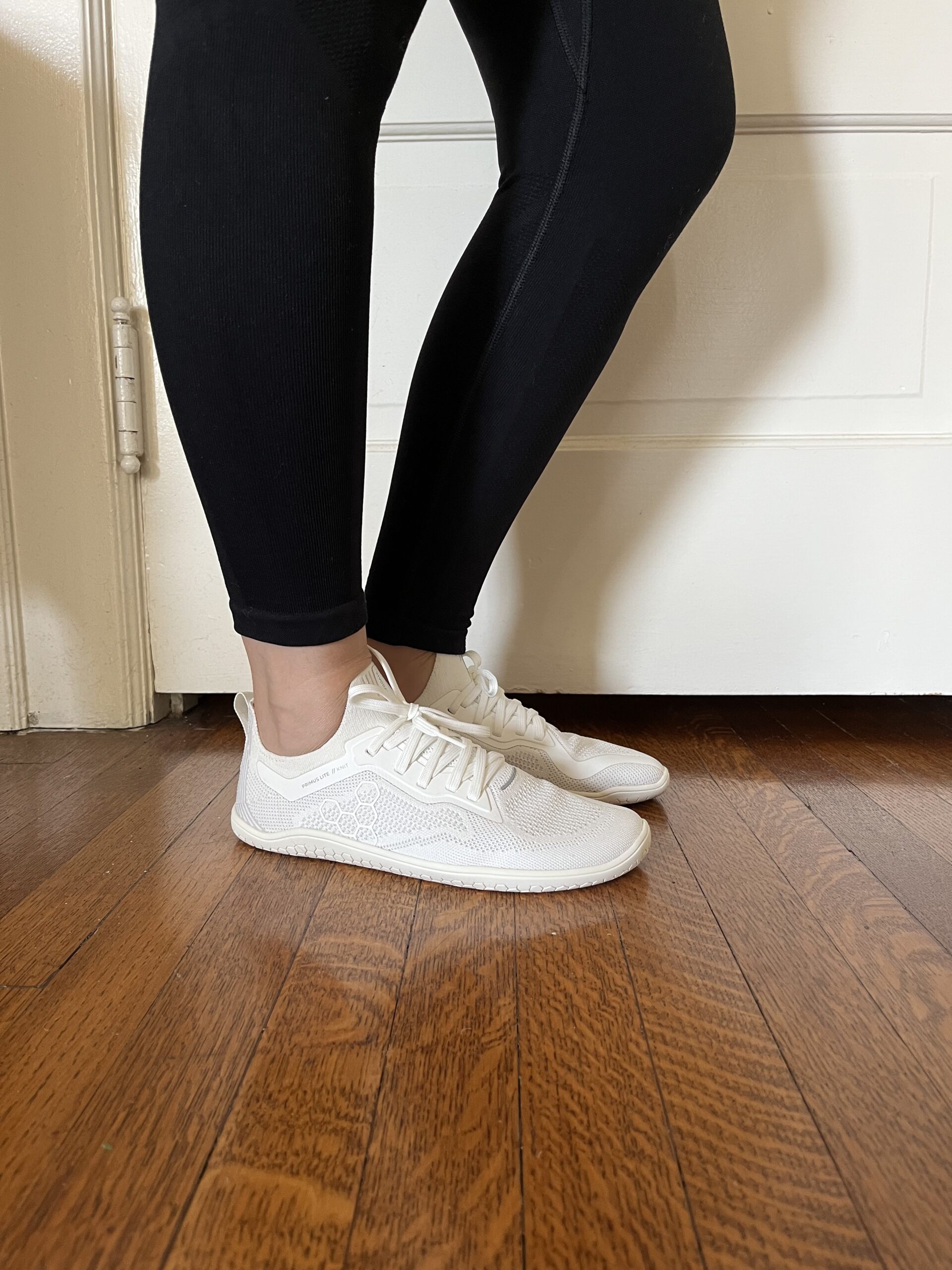
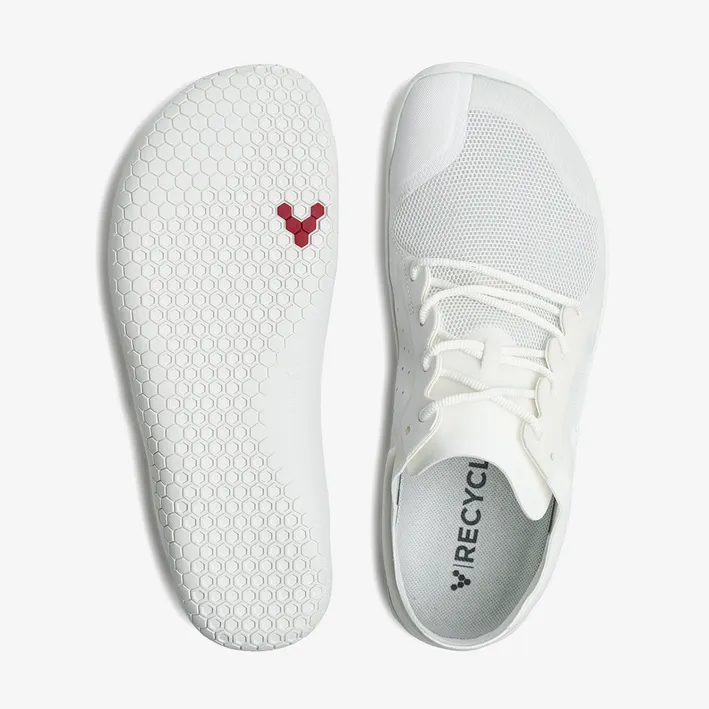
6. VEJA
Best For | Supportive and durable running shoes
Materials | Amazonian rubber, rice waste, sugarcane, recycled polyester
Size Range | Women’s 4–10, men’s 9–13
Price Range | $160–$245
From one of our very favorite sustainable shoe brands comes a running shoe we absolutely love: say hello to VEJA’s running shoe collection! These shoes have gained recognition around the globe, particularly the VEJA Condors, for being the first post-petroleum running shoes. Ethically made using recycled polyester, Ricinus oil, rice waste, sugarcane, and Amazonian rubber, they are comfortable and durable enough for everyday runners. The bright color options are pretty enticing, too.
I have a few pairs of Vejas that I already love for walking and everyday wear, and the Condors did not disappoint. They offer more support than other shoes on this list, and they are designed to be highly versatile for long runs, easy runs, and recovery sessions. I found 5k runs to be the sweet spot. (Bonus: I also have a pair of the Impalas, which I absolutely love for travel/walking/spontaneous runs on the go.)
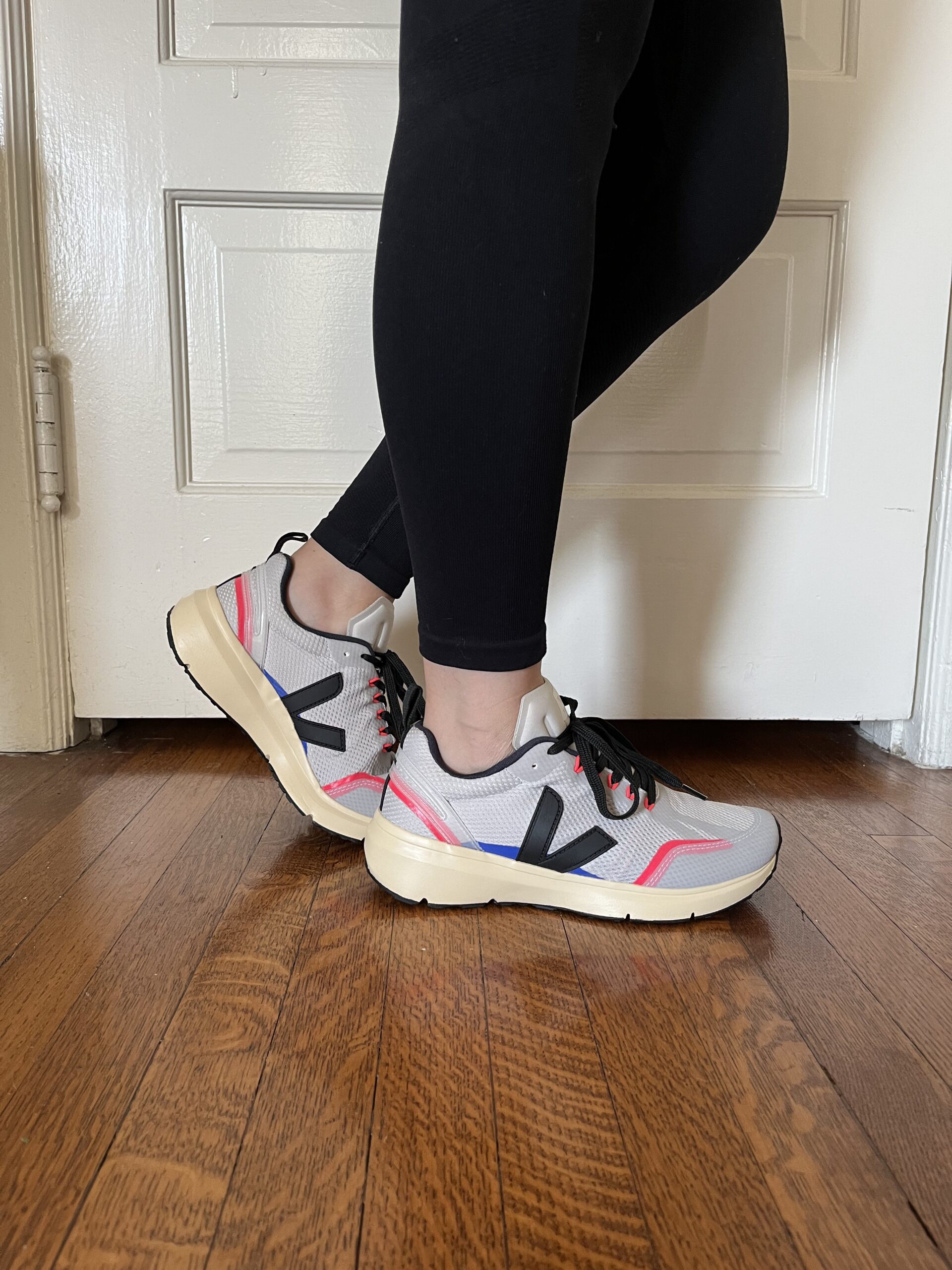
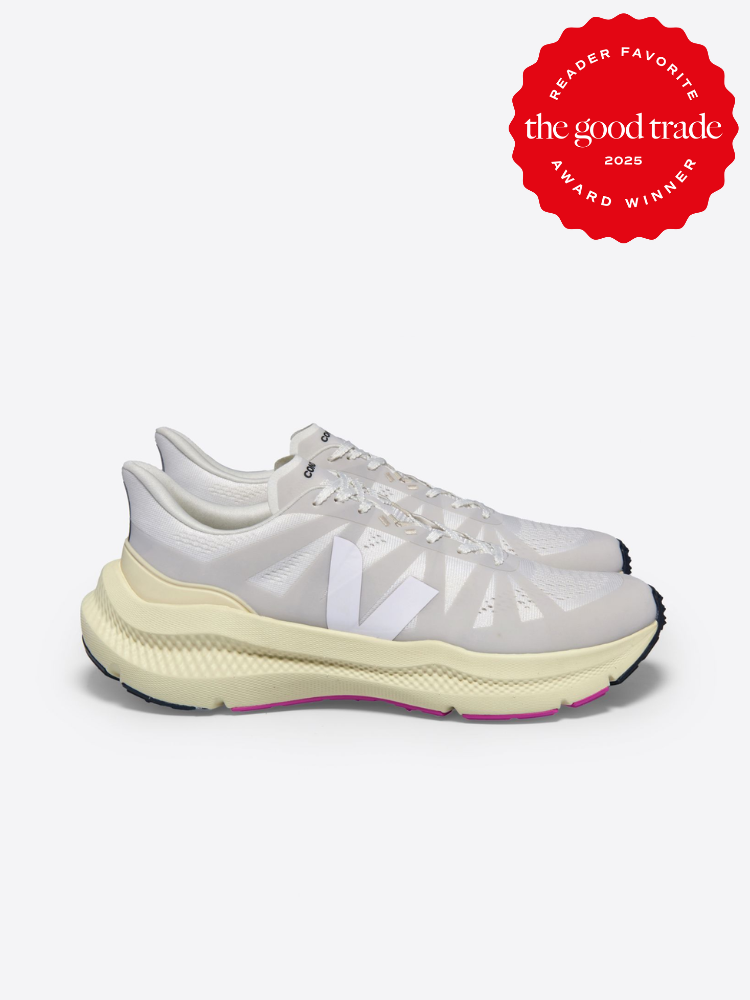
7. Flux Footwear
Best For | Minimal running shoe with a wider box toe
Materials | Phylon, rubber, polyester knit textile
Size Range | Women’s 5.5–15, men’s 4–14
Price Range | $139
Flux Footwear designs its shoes with runners in mind, focusing on creating a natural, supportive feel that allows your foot to move how it’s meant to. These running shoes have a wider toe box to let your toes splay (love that), which helps with balance and stability, as well as keeping a steady stride. The shoes are super lightweight and flexible too, adapting to your foot and the ground beneath you, so each step feels comfortable and responsive. Flux also incorporates cushioning for a softer impact absorption that supports natural movement while providing enough protection for hitting the pavement or trail.
I tested the Adapt Runner, as it has more than 7,000 five-star reviews. I love that it comes in so many fun colors, and the design is fairly minimal (reminding me of my classic Nike running shoes in college). As these are crafted for distance and have a zero-drop sole, I decided to take these for a longer, ten-mile run. It includes a removable, textured insole equipped with over 100 nodes that massage your feet and engage your central nervous system with every step. The breathable knit fabric enhances airflow, and I could definitely tell the difference in terms of how cool my feet felt, even while the rest of my body was dripping. While Flux doesn’t have many sustainability initiatives, we love that they offer inclusive sizing options and that the brand offers first responder/military discount options. We hope to see more recycled and sustainable materials in the future!
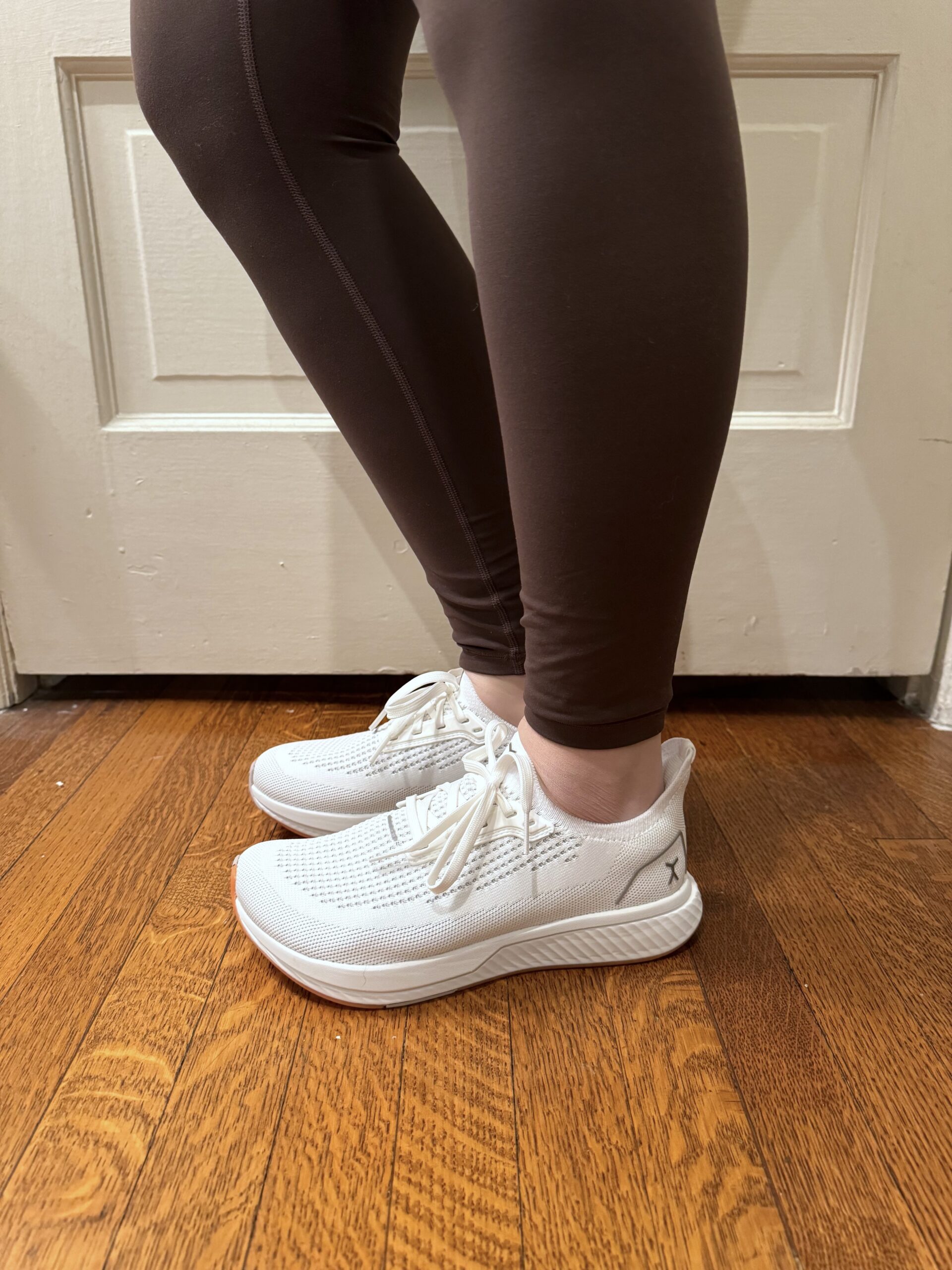
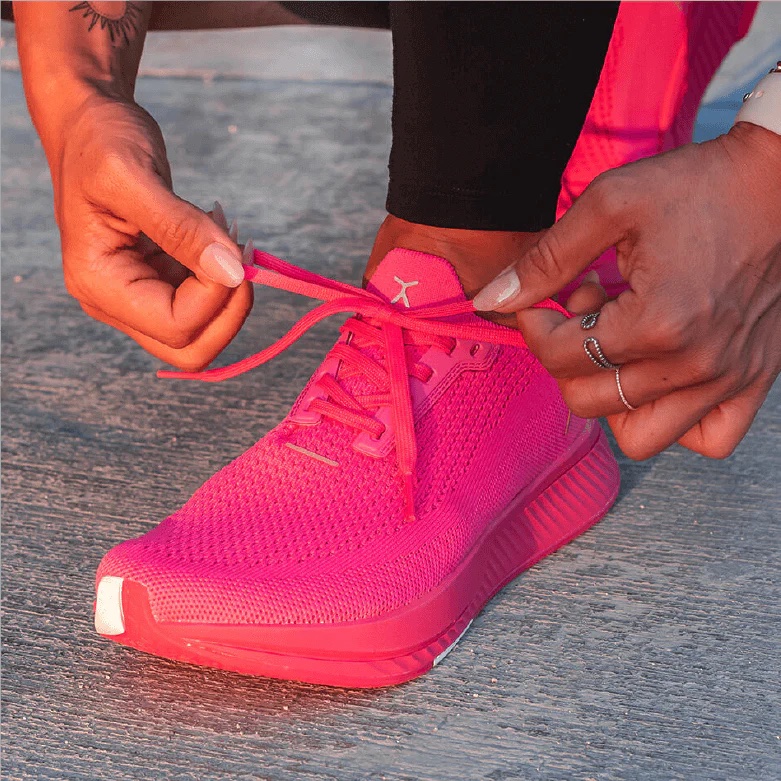
Kayti Christian is a Senior Content Strategist at The Good Trade. With an MFA in Nonfiction Creative Writing, her work has appeared in TODAY, Shondaland, and The New York Times. Since 2017, Kayti has been uncovering and reviewing the best sustainable home brands and wellness products. Her personal journey through four years of fertility treatments has inspired her to write extensively about women’s healthcare and reproductive access. Beyond her work at The Good Trade, Kayti is the creator of Feelings Not Aside, a Substack newsletter with 6,000 subscribers, and the cohost of the FriedEggs Podcast, which delves into IVF and infertility.
